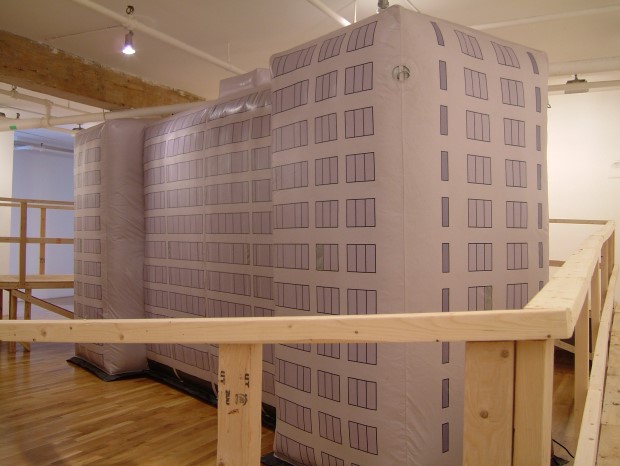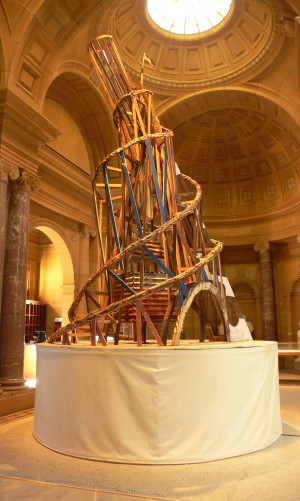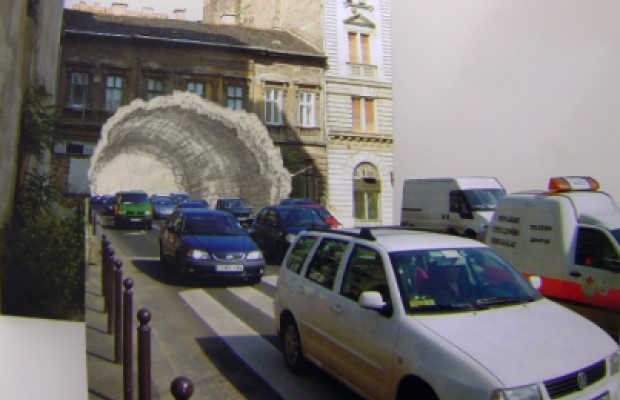Fourth Plinth artist set for headline summer show at Whitechapel Gallery

Photograph: courtesy of Whitechapel Gallery
Iraqi-American artist Michael Rakowitz, whose sculpture is on show at the iconic Fourth Plinth in Trafalgar Square until 2020, will head up this summer’s line-up at Whitechapel Gallery.
A major three-month exhibition launching on 4 June brings the Chicago-based artist’s most important projects from the last two decades to the UK for the first time.
Eight installations, drawing on architecture, culture, cuisine and geopolitics from 750BC to the present day, will be on display.
The show is timed to coincide with Rakowitz’s Fourth Plinth sculpture of a lamassu, an Assyrian protective deity with a human head on the winged body of a bull.
The work forms part of the artist’s epic, ongoing project, The invisible enemy should not exist (2007-present), to recreate cultural artifacts lost or destroyed during the Iraq War.

An inflatable tower block that rhythmically rises and falls opens Rakowitz’s show at the Whitechapel.
Dull Roar (2005) is based on the troubled Pruitt-Igoe public housing project in 1950s Missouri.
The 33 high-rises were built to ease overcrowding in the city of St Louis and give residents, many of whom had previously lived in squalid conditions, “sun, space and greenery”.
But the complex quickly fell into disrepair and became famous all over the world for its poverty, crime and racial segregation.
By the 1970s, all of the buildings had been demolished.

Photograph: courtesy of Whitechapel Gallery
Opposite stands a model of Russian architect Vladimir Tatlin’s unrealised utopian tower – intended to be a grand, 400-metre tall symbol of communism’s success.
Rakowitz’s replica, White man got no dreaming (2008), was made in collaboration with an Aboriginal community in Sydney whose dwellings had been condemned, using materials from their crumbling homes.
The project was part of a successful campaign for new housing and typifies the interaction with communities at the heart of Rakowitz’s work.
The artist’s concern with cultural destruction then comes to the fore with What dust will rise? (2012), stone books he carved with the help of Afghan artisans from the ruins of two 6th-century Bamiyan Buddhas – whose destruction at the hands of the Taliban in 2012 provoked global outrage.
Each of the books is a monument to those lost in the second world war.
Life-sized recreations of murals obliterated by Islamic State in 2015 are also on display, along with other objects which form part of The invisible enemy should not exist.
In the aftermath of the US invasion of Iraq, thousands of archaeological artefacts were stolen or wiped out.
Rakowitz remakes them from packaging such as date syrup cans – a reference to how war and sanctions have decimated the date industry in Iraq, once a lucrative export second only to oil.
Another work on show is The Breakup (2010-present), which sees Rakowitz, an ardent Beatles fan, superimpose ephemera relating to the band’s break-up over the Arab-Israeli conflict and the collapse of Pan-Arabism.

The exhibition culminates with The Visionaries.
In 2006, the artist asked citizens of post-Soviet Budapest how they would fill the derelict building sites that dot their city “like missing teeth”.
Their imaginative architecture is displayed as if floating in mid-air, ending the exhibition with a collectively envisioned future.
Whitechapel Gallery director and the show’s co-curator Iwona Blazwick said: “From the Assyrian winged bull he placed in Trafalgar Square to the stone books he had carved from the ruins of Afghanistan’s Bamiyan Buddhas, sculptor, detective and some time cook Michael Rakowitz turns the disasters of war into beacons of knowledge and hope.”
Michael Rakowitz runs from 4 June until 25 August at the Whitechapel Gallery, 77 – 82 Whitechapel High Street, London E1 7QX. Tickets start from £9.50 with concessions.
